You are using an out of date browser. It may not display this or other websites correctly.
You should upgrade or use an alternative browser.
You should upgrade or use an alternative browser.
Drag of radiators
- Thread starter spicmart
- Start date
Avimimus
ACCESS: Top Secret
- Joined
- 15 December 2007
- Messages
- 2,233
- Reaction score
- 499
I suspect that the actual elements within the radiators will also matter (as well as the housing).
One would also need to take into account how open the radiator is at a given altitude/speed.
Anyway - if anyone has insights... it is a fascinating topic - much like intakes for jet engines... it'd be a really exciting book (although I'm not sure summarising old NACA reports etc. would lead to a huge market for that book beyond some of the people on this forum )
)
One would also need to take into account how open the radiator is at a given altitude/speed.
Anyway - if anyone has insights... it is a fascinating topic - much like intakes for jet engines... it'd be a really exciting book (although I'm not sure summarising old NACA reports etc. would lead to a huge market for that book beyond some of the people on this forum
dannydale
ACCESS: Top Secret
- Joined
- 13 May 2007
- Messages
- 547
- Reaction score
- 398
I think with careful design a few planes got a bit of thrust out of their radiator ducts through the Meredith effect.
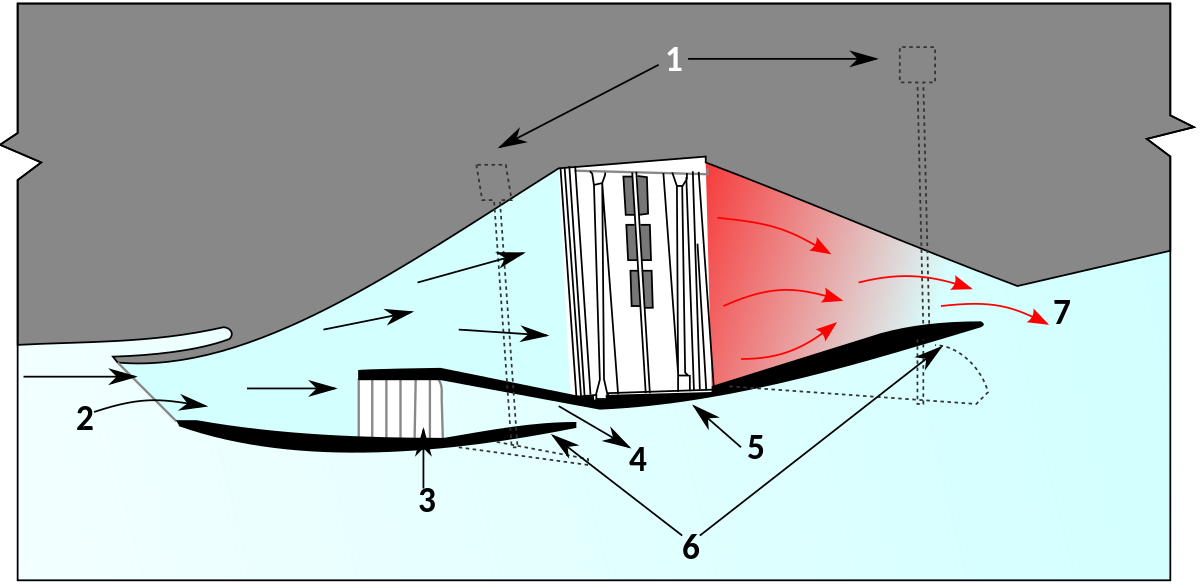
 en.wikipedia.org
en.wikipedia.org

Meredith effect - Wikipedia
- Joined
- 11 March 2012
- Messages
- 3,016
- Reaction score
- 2,693
Meredith radiators were featured in KITPLANES Magazine a few years back. A homebuilder tested variations on Meredith radiators installed underneath his RV-7. After testing a variety of configurations, his best radiator produced only a tiny amount of excess thrust. IOW most Meredith radiators only zero cooling drag.
The primary advantage of Meredith radiators installed in Mustang, Martin-Baker 5, Napier Heston Racer, etc. is that they hide in the aft fuselage, allowing a large core and slow airflow without increasing profile drag.
There are a dozen other variables to designing radiators. The larger the core, the slower the airflow, etc. all affect efficiency.
Most of the Unlimited Racers - at Reno - feature spray bars ahead of their radiators or oil coolers. Theses spray water and alcohol on near-stock radiators to improve cooling. Racers carry little more than 20 minutes of water/alcohol ... barely enough for one race. They run their engines so fast , so hot and so highly pressurized that they are seconds away from wrecking engines during every lap.
Try reading the book "Cooling Reno's Unlimited Air Racers" by Dan Whitney and Peter Law. Peter is a retired Lockheed thermodynamic engineer who has refined cooling systems on many Unlimited Air Racers that have competed at Reno: Grumman F8F Bearcat, Hawker Sea Fury, NAA P-51, Vought Corsair and amateur-built Tsunami.
The primary advantage of Meredith radiators installed in Mustang, Martin-Baker 5, Napier Heston Racer, etc. is that they hide in the aft fuselage, allowing a large core and slow airflow without increasing profile drag.
There are a dozen other variables to designing radiators. The larger the core, the slower the airflow, etc. all affect efficiency.
Most of the Unlimited Racers - at Reno - feature spray bars ahead of their radiators or oil coolers. Theses spray water and alcohol on near-stock radiators to improve cooling. Racers carry little more than 20 minutes of water/alcohol ... barely enough for one race. They run their engines so fast , so hot and so highly pressurized that they are seconds away from wrecking engines during every lap.
Try reading the book "Cooling Reno's Unlimited Air Racers" by Dan Whitney and Peter Law. Peter is a retired Lockheed thermodynamic engineer who has refined cooling systems on many Unlimited Air Racers that have competed at Reno: Grumman F8F Bearcat, Hawker Sea Fury, NAA P-51, Vought Corsair and amateur-built Tsunami.
Last edited:
I think with careful design a few planes got a bit of thrust out of their radiator ducts through the Meredith effect.

Meredith effect - Wikipedia
en.wikipedia.org
Meredith radiators were featured in KITPLANES Magazine a few years back. A homebuilder tested variations on Meredith radiators installed underneath his RV-7. After testing a variety of configurations, his best radiator produced only a tiny amount of excess thrust. IOW most Meredith radiators only zero cooling drag.
The primary advantage of Meredith radiators installed in Mustang, Martin-Baker 5, Napier Heston Racer, etc. is that they hide in the aft fuselage, allowing a large core and slow airflow without increasing profile drag.
There are a dozen other variables to designing radiators. The larger the core, the slower the airflow, etc. all affect efficiency.
Most of the Unlimited Racers - at Reno - feature spray bars ahead of their radiators or oil coolers. Theses spray water and alcohol on near-stock radiators to improve cooling. Racers carry little more than 20 minutes of water/alcohol ... barely enough for one race. They run their engines so fast , so hot and so highly pressurized that they are seconds away from wrecking engines during every lap.
Try reading the book "Cooling Reno's Unlimited Air Racers" by Dan Whitney and Peter Law. Peter is a retired Lockheed thermodynamic engineer who has refined cooling systems on many Unlimited Air Racers that have competed at Reno: Grumman F8F Bearcat, Hawker Sea Fury, NAA P-51, Vought Corsair and amateur-built Tsunami.
Very interesting. I want to buy the book you recommended but couldn't find it anywhere.
I think with careful design a few planes got a bit of thrust out of their radiator ducts through the Meredith effect.

Meredith effect - Wikipedia
en.wikipedia.org
Meredith radiators were featured in KITPLANES Magazine a few years back. A homebuilder tested variations on Meredith radiators installed underneath his RV-7. After testing a variety of configurations, his best radiator produced only a tiny amount of excess thrust. IOW most Meredith radiators only zero cooling drag.
The primary advantage of Meredith radiators installed in Mustang, Martin-Baker 5, Napier Heston Racer, etc. is that they hide in the aft fuselage, allowing a large core and slow airflow without increasing profile drag.
There are a dozen other variables to designing radiators. The larger the core, the slower the airflow, etc. all affect efficiency.
Most of the Unlimited Racers - at Reno - feature spray bars ahead of their radiators or oil coolers. Theses spray water and alcohol on near-stock radiators to improve cooling. Racers carry little more than 20 minutes of water/alcohol ... barely enough for one race. They run their engines so fast , so hot and so highly pressurized that they are seconds away from wrecking engines during every lap.
Try reading the book "Cooling Reno's Unlimited Air Racers" by Dan Whitney and Peter Law. Peter is a retired Lockheed thermodynamic engineer who has refined cooling systems on many Unlimited Air Racers that have competed at Reno: Grumman F8F Bearcat, Hawker Sea Fury, NAA P-51, Vought Corsair and amateur-built Tsunami.
Very interesting. I want to buy the book you recommended but couldn't find it anywhere.
What is being referred to, is probably this, its a paper on the Aircraft Engine Historical Societies website called:
"AIRCRAFT PISTON ENGINE COOLING SYSTEMS" by Pete Law
I leave it as a fun project for those interested to find it, as I cant.... hahah, but anyway, thats where that report lives (somewhere).
Regarding the drag of each installation type, it is a bit difficult to give any definitive answers, as it seems possible to make
very good, and also very useless examples of each type, because there are so many more variables involved than just
where the radiator is in the airframe. If the ducting is poor, whatever you design will be awful.
For example, the P-51 with the belly radiator had a superlative system (mostly because they went for a slightly "bucking the trend"
setup with a very large, heavy radiator, but, used a very high expansion ratio duct to give very low drag). In principle, the
Boulton Paul Defiant also had the same layout (a belly radiator). Which we can I think all agree, was not a drag-racer (although to be
fair, its useless performance was hardly just the fault of the radiator, but I think you can appreciate the general point).
Now, having said all that as a "disclaimer". I`ll give my view having read a LOT of ww2 cooling documents.
What is clear is that a broad evolutionary path can be seen roughly as follows:
1) Radiators in simple pods in the airstream, without fairing.
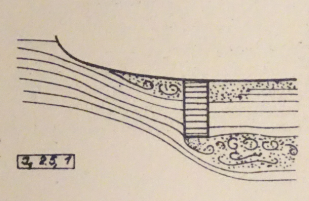
2) Radiators under wings in partially sunk-in pods with a higher expansion ratio and half the frontal area inside the wing/fuselage
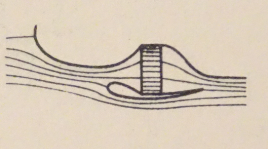
3) Radiators under fuselage with heavily sunk in pods and very high expansion ratio (P-51)
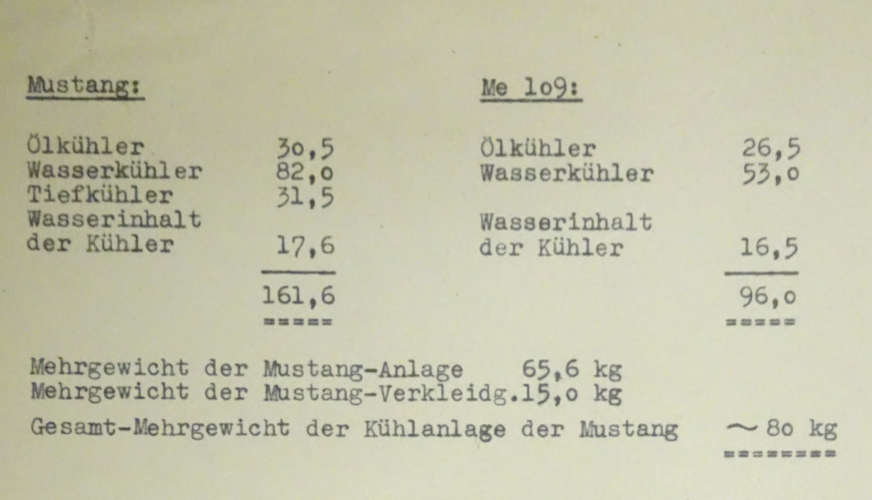
3) Leading edge radiators (Mosquito)
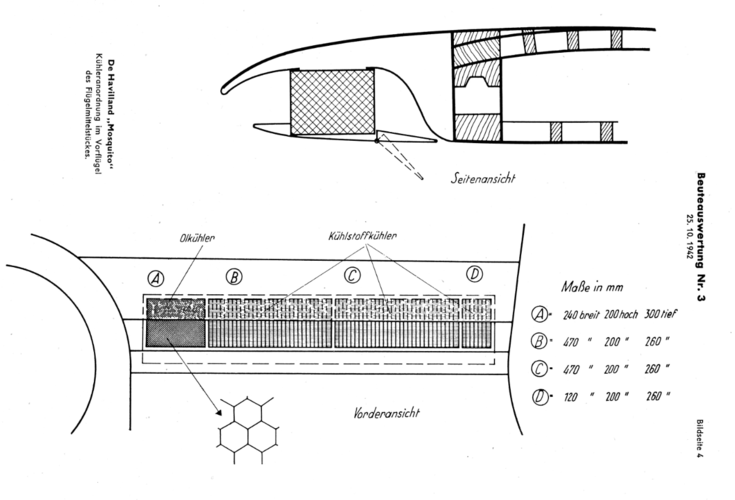
4) Annular nose radiators (Fw190 D-9, and various experimental types, some with powered fans)
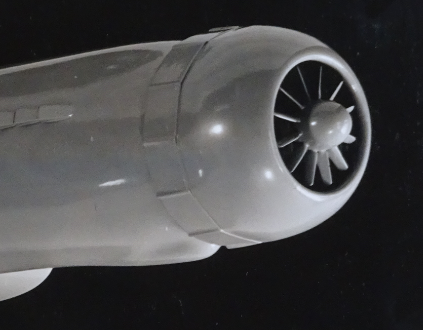
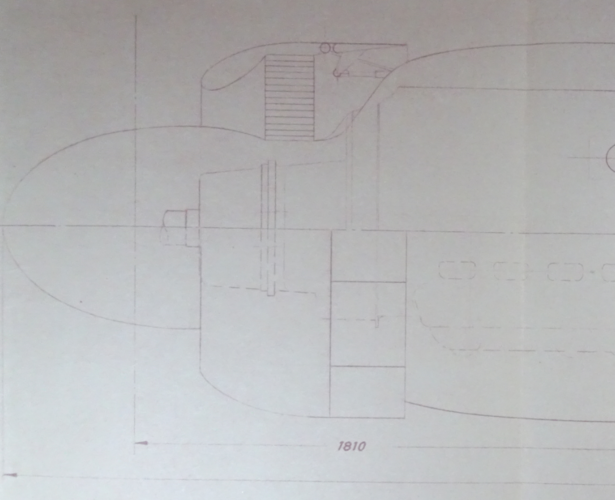
Trying to objectively quantify the drag of each of those installations requires more time than I have remaining in this earthly veil, although you`ll
find lots of fun comparisons of different installations on one particular type, which are probably just about viable to use as comparators as the
airframes are similar. For an example of that, see:
Last edited:
- Joined
- 4 May 2008
- Messages
- 2,440
- Reaction score
- 675
The fact that generalizations on the performance of different radiator installations is hard is reflected in conceptual design as well; i have yet to find a good methodology that doesn't require going into detailed design of the radiator.
Last edited:
Also the P-51 radiator was the perfect bump to add where it was for tempering compressibility effects.
It's often sidelined but probably the greatest contribution in drag reduction at high speed.
The 190 also had a slot for blown compressed air with a curved surface behind (coanda). In effect it was an axisymmetric blown boundary layer device with high drag reduction and reattaching effect of the stream at alpha (beta).
It's often sidelined but probably the greatest contribution in drag reduction at high speed.
The 190 also had a slot for blown compressed air with a curved surface behind (coanda). In effect it was an axisymmetric blown boundary layer device with high drag reduction and reattaching effect of the stream at alpha (beta).
Last edited:
Thanks, Calum.
Very interesting. Something along this line I read in another report before.
German aircraft were using annular radiators in front line units when Napier conducted these test.
But Napier did not use flaps behind and around the radiators like the Germans did on e. g. the Fw 190D.
Its flaps would open when more cooling was necessary and increase drag.
Afaik Napier's system OTOH would push the whole annular radiator arrangement forward and the gaps between radiator and engine cowling would widen providing more airflow and cooling.
You sure already know about that.
Would it be okay for you that I share this report elsewhere? Of course citing you.
I guess you mean the Fw 190D. What is this slot.....? Could you elaborate on it?

Is there any difference between axial and drum (both annular?) in drag and efficiency?
The Fw 190D-9/11/12/13 had axial radiators. D-14/15 and Ta 152 had drums.
Very interesting. Something along this line I read in another report before.
German aircraft were using annular radiators in front line units when Napier conducted these test.
But Napier did not use flaps behind and around the radiators like the Germans did on e. g. the Fw 190D.
Its flaps would open when more cooling was necessary and increase drag.
Afaik Napier's system OTOH would push the whole annular radiator arrangement forward and the gaps between radiator and engine cowling would widen providing more airflow and cooling.
You sure already know about that.
Would it be okay for you that I share this report elsewhere? Of course citing you.
The 190 also had a slot for blown compressed air with a curved surface behind (coanda). In effect it was an axisymmetric blown boundary layer device with high drag reduction and reattaching effect of the stream at alpha (beta).
I guess you mean the Fw 190D. What is this slot.....? Could you elaborate on it?
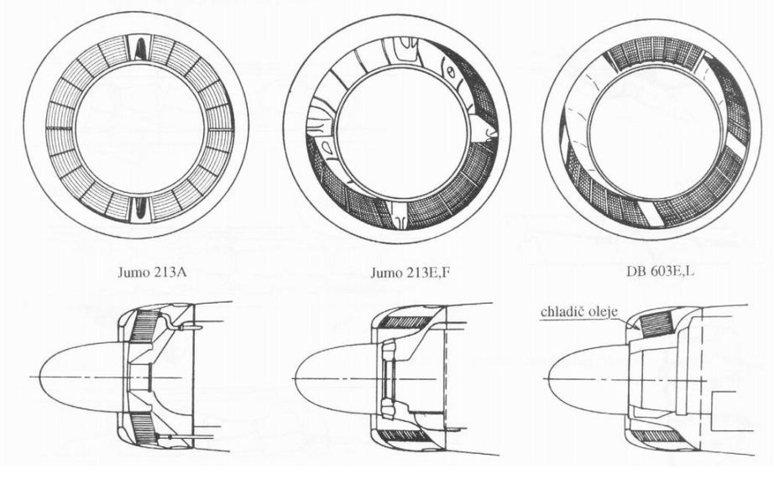
Is there any difference between axial and drum (both annular?) in drag and efficiency?
The Fw 190D-9/11/12/13 had axial radiators. D-14/15 and Ta 152 had drums.
Last edited:

The 190 had a reverse flow for the radiator (the radiator suck air inside the engine cowl plenum thanks to the Meredith effects) and expluse compressed heated flow in front of the curved engine cowl external surface through an annular slot. The air is accelerated due to reduced section and overpressure from the propeller stream what reduces cowling drag and reattach the boundary layer at low (but commune in a piston engine) offset angles (pitch and yaw).
Thanks, Calum.
Very interesting. Something along this line I read in another report before.
German aircraft were using annular radiators in front line units when Napier conducted these test.
But Napier did not use flaps behind and around the radiators like the Germans did on e. g. the Fw 190D.
The flaps would open when more cooling was necessary and increase drag.
Afaik Napier's system would push the whole annular radiator arrangement forward and the gaps between radiator and engine cowling would widen providing more airflow and cooling.
You sure already know about that.
Would it be okay for you that I share this report elsewhere? Of course citing you.
The 190 also had a slot for blown compressed air with a curved surface behind (coanda). In effect it was an axisymmetric blown boundary layer device with high drag reduction and reattaching effect of the stream at alpha (beta).
I guess you mean the Fw 190D. What is this slot.....? Could you elaborate on it?
View attachment 657070
Is there any difference between axial and drum (both annular?) in drag and efficiency?
The Fw 190D-9/11/12/13 had axial radiators. D-14/15 and Ta 152 had drums.
That report by Napier was put together by another forum member, I was simply linking to it. So you need to thank them.
I think its on the last page of this thread.
1635yankee
Recovering aeronautical engineer
- Joined
- 18 August 2020
- Messages
- 405
- Reaction score
- 478
The "thrust" from a radiator can be calculated by treating the assemblage as a ramjet. Since the aircraft is subsonic, the possible pressure ratio is very low, the pressure loss in the radiator is going to be high, certainly when compared to a combustion chamber, and a nozzle.
- Joined
- 8 March 2009
- Messages
- 939
- Reaction score
- 924
This is one of my favorite subjects with regards to piston aircraft. Hoerner is probably the best source for getting an idea of generic installations vs drag. Like so;


There is also a lot that can be gleaned from NACA reports, or RAE/DVL stuff too but that isn't as easy to get. For example with LE radiators NACA found that they are more sensitive to AoA than other installations, so they can work really well in level flight but are probably a bad option for an aircraft that needs to climb rapidly. There is also the difficulty of how you can get a duct of adequate length with wing installations - example A on the left drawing isn't very far off what Westland did with the Whirlwind.
There is also a strong case to be made for very short ducts, the kind you get in ring type annular installations. I think it was some SAE paper that did a neat comparative analysis of late-war type radiators but I haven't been able to find it again. Significantly slanting the radiator so you can couple it with a really short duct has been pretty widely used in motorsports since the 60s, maybe even earlier.
The most interesting war time radiator idea I'm aware of is dumping the exhaust into the duct. Supposedly Meredith suggested this to Supermarine around 42/43, along with other recommendations for reducing cooling drag. I've never seen that paper but I think you can see hints of Supermarine trying out this idea in some of the late war spitfire variants posted on this forum.
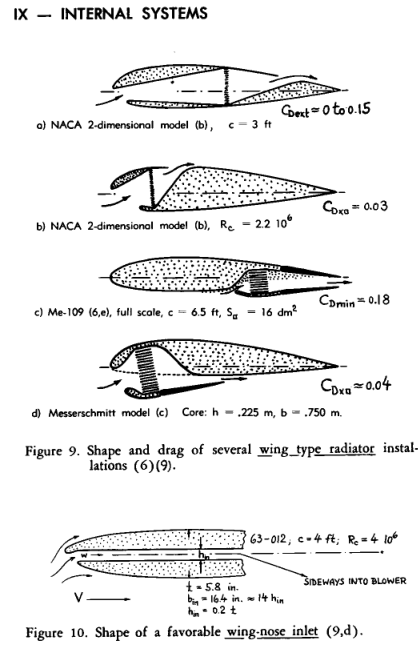
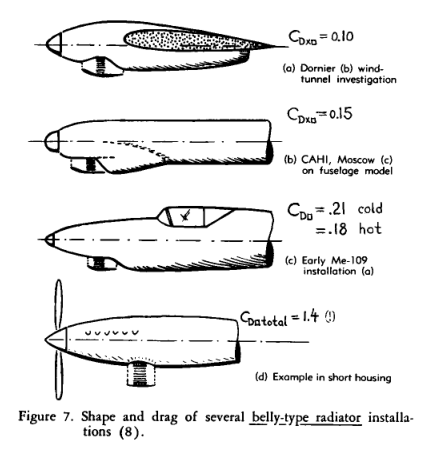
There is also a lot that can be gleaned from NACA reports, or RAE/DVL stuff too but that isn't as easy to get. For example with LE radiators NACA found that they are more sensitive to AoA than other installations, so they can work really well in level flight but are probably a bad option for an aircraft that needs to climb rapidly. There is also the difficulty of how you can get a duct of adequate length with wing installations - example A on the left drawing isn't very far off what Westland did with the Whirlwind.
There is also a strong case to be made for very short ducts, the kind you get in ring type annular installations. I think it was some SAE paper that did a neat comparative analysis of late-war type radiators but I haven't been able to find it again. Significantly slanting the radiator so you can couple it with a really short duct has been pretty widely used in motorsports since the 60s, maybe even earlier.
The most interesting war time radiator idea I'm aware of is dumping the exhaust into the duct. Supposedly Meredith suggested this to Supermarine around 42/43, along with other recommendations for reducing cooling drag. I've never seen that paper but I think you can see hints of Supermarine trying out this idea in some of the late war spitfire variants posted on this forum.
- Joined
- 1 May 2007
- Messages
- 2,460
- Reaction score
- 1,453
For example with LE radiators NACA found that they are more sensitive to AoA than other installations, so they can work really well in level flight but are probably a bad option for an aircraft that needs to climb rapidly.
Interesting to read this . . . I've also read elsewhere, (I will have to find the reference) that this was the reason Hawkers changed the Tempest from leading-edge to a chin radiator. Initially, top speed was more important, hence the LE radiators, but then climb performance became the priority, so the change was made . . .
cheers,
Robin.
WJPearce
ACCESS: Confidential
- Joined
- 21 March 2008
- Messages
- 63
- Reaction score
- 36
I bring gifts...
"Aircraft Piston Engine Cooling Systems" by Pete Law is attached. I don't think it was an AEHS presentation, but it may have been. I found it on the web and not on the AEHS site. Maybe there is an article/paper version that is somewhere on the AEHS. However, the two-part article below is from the AEHS site. As a reminder to all the non-members, you can join the AEHS for just $12 a year.
Evaporative Cooling – The Racer’s Edge Part 1: Through WWII
Evaporative Cooling – The Racer’s Edge Part 2: Post WWII
By edit: I found that "Aircraft Piston Engine Cooling Systems" was an AEHS presentation from 2005. I will leave the attachment here, although that info is typically found on the "Members" side. Hopefully I won't get in trouble for it, and maybe it will encourage some to join the AEHS.
"Aircraft Piston Engine Cooling Systems" by Pete Law is attached. I don't think it was an AEHS presentation, but it may have been. I found it on the web and not on the AEHS site. Maybe there is an article/paper version that is somewhere on the AEHS. However, the two-part article below is from the AEHS site. As a reminder to all the non-members, you can join the AEHS for just $12 a year.
Evaporative Cooling – The Racer’s Edge Part 1: Through WWII
Evaporative Cooling – The Racer’s Edge Part 2: Post WWII
By edit: I found that "Aircraft Piston Engine Cooling Systems" was an AEHS presentation from 2005. I will leave the attachment here, although that info is typically found on the "Members" side. Hopefully I won't get in trouble for it, and maybe it will encourage some to join the AEHS.
Attachments
Last edited:
- Joined
- 19 October 2012
- Messages
- 1,917
- Reaction score
- 1,766
There are a number of patents taken out by Rolls-Royce (Ellor and Paravicini) in the mid-1930s with schemes for cooling ducts, some combined with exhaust systems to enhance flow. The potential for small thrust, Meredith style, is also claimed for some. For example
GB456335A
GB471926A
GB472555A
GB456335A
GB471926A
GB472555A
Last edited:
Similar threads
-
-
Hawker Tempest Prototypes & Projects
- Started by JFC Fuller
- Replies: 10
-
Radiator concept similarity question: Hawker Tempest I vs Hawker Fury I vs DH Mosquito vs DH Hornet
- Started by BarnOwlLover2
- Replies: 1
-
-
